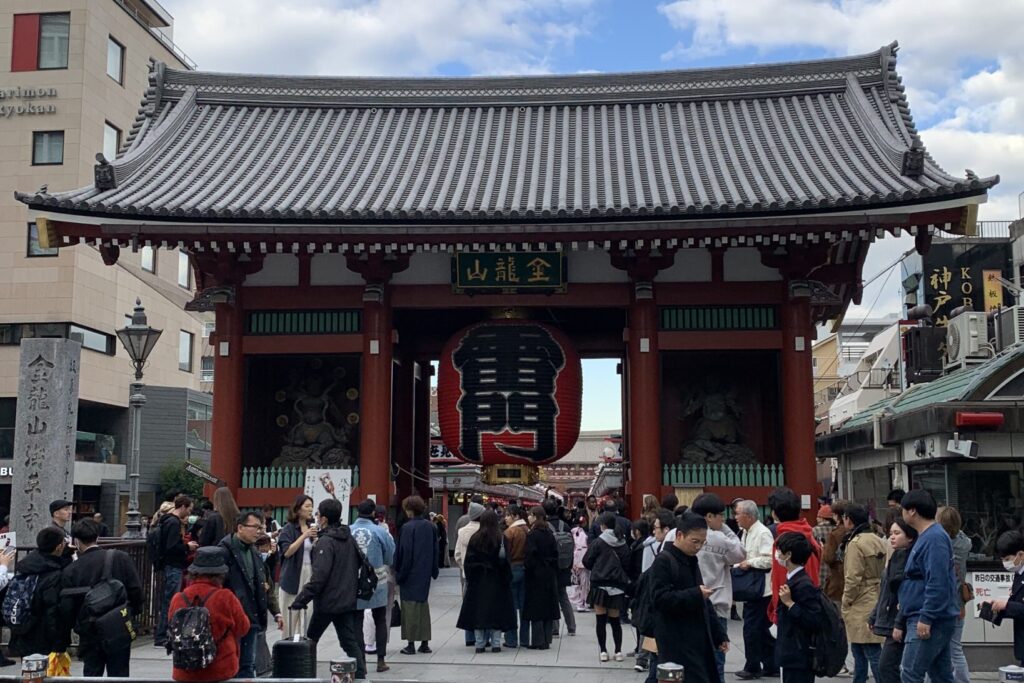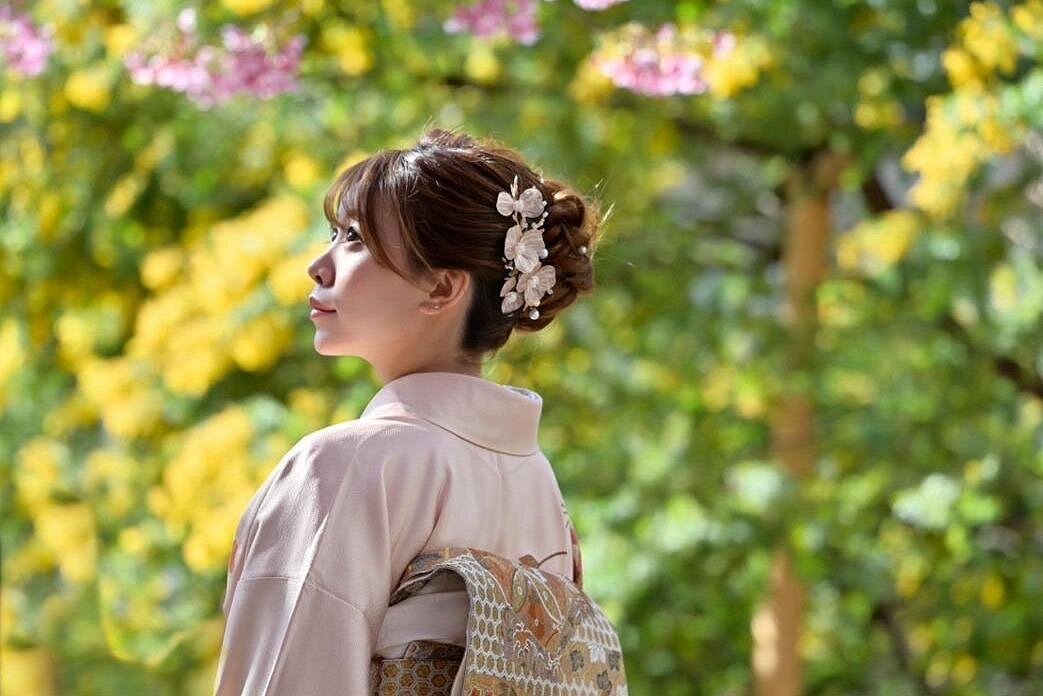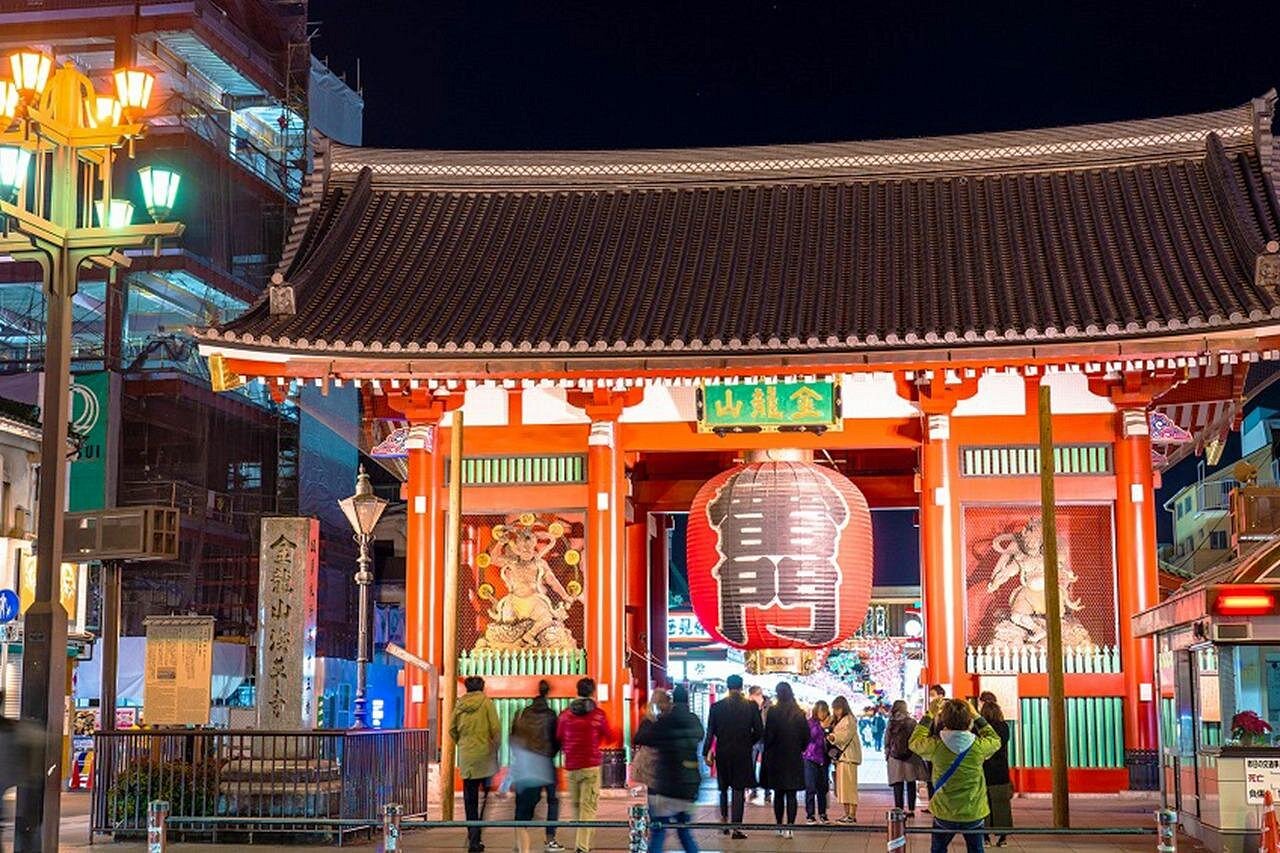
Today, I’ll guide you through Tokyo’s top tourist spots. From Asakusa, the bustling Senso-ji Temple with its iconic Kaminarimon Gate, to the Ryogoku Kokugikan Sumo Wrestling Arena, it’s a can’t-miss route for Tokyo sightseeing.
This area is packed with traditional Japanese eateries, offering a variety of local delicacies. There are so many souvenir shops around that it’s hard to decide which one to choose. Well, sharpen your sense of smell like mine and explore to find some delicious treats and special goods!

A. Start Walking Asakusa, Big Red Lantern Kaminarimon
Strolling starts from the iconic spot, Kaminarimon(Kaminari Gate) (marked as A on the map), the most well-known spot for foreigners visiting Tokyo. Once you come out of Asakusa Station’s No. 2 or 3 exit on the Toei Asakusa(Metro) Line or Ginza (Metro) Line, you’ll find Kaminarimon (Kaminari Gate) right away.
Many Japanese and international tourists alike gather around the enormous lantern to take pictures. It seems like it has been there forever, but it has actually been rebuilt several times. Actually, the current structure was donated by Konosuke Matsushita, the former president of Panasonic in 1960. Underneath the lantern, you’ll find the former name, “Matsushita Denki,” which is Panasonic’s old name.
B. Bustling Nakamise Street, Asakusa Senso-ji
Passing through Kaminarimon (Kaminari Gate), you’ll enter Nakamise Street (marked as B on the map). It’s always bustling with visitors. Souvenir shops line both sides, offering a mix of traditional items, pseudo-Japanese goods, and non-Asakusa-related trend items. Those are creating a somewhat chaotic atmosphere.
Many people might be dressed in Kimonos, but most of them are foreigners. While some Japanese might wear Kimono, especially during the New Year and special occasion, it’s rare to see people in Kimonos on weekdays nowadays. If you’re interested in wearing Kimono, there are several shops in Asakusa that offer such services.


C. Front of Asakusa Senso-ji Temple
Once you reach Hozomon Gate (marked as C on the map), Nakamise Street comes to an end. If you’d like to explore a bit more and check out souvenir shops, you might want to stroll through side streets like Denpoin Street.
After passing through Hozomon Gate, head towards the main hall of Senso-ji Temple. Feel free to bow, clasp your hands in prayer, and make a vow to undertake whatever is necessary to fulfill your wishes. The experience is sure to provide the support you need in making efforts toward achieving your aspiration. There’s a special power in Japanese shrines and temples like this.
PR Experience Traditional Life
Kimono rental in Asakusa presented by Viator;
Detour Point ❶ Nostalgic Amusement Park, Asakusa Hanayashiki
If you’re traveling with children up to the lower elementary school age, it might be nice to visit the amusement park behind Senso-ji Temple. Asakusa Hanayashiki was established in 1853 and is the first amusement park in Japan.
While not as elaborate as Disneyland, it features a merry-go-round and various rides for kids. If you’re lucky, you might even catch a small show. It’s sure to be the highlight of the Japan trip for the little ones!
The playground equipment may not be the most modern, but it exudes a certain nostalgic charm, offering a bit of a nostalgic and heartwarming experience even for adults.


Detour Point ❷ New Tokyo Landmark, Tokyo Skytree:
In Japan, there’s jesting words that goes “Baka to kemuri wa yoku noboru,” meaning “Fools and smoke rise high.” This expression implies that foolish or nonsensical things tend to attract attention or become prominent, much like smoke rising high.
However, when you gaze at the Tokyo Skytree, it’s only natural to feel the urge to go up. Moreover, on a clear day, you can catch a glimpse of Mt. Fuji.
It’s a pleasant 20-minute walk from the Kaminarimon (Kaminari Gate) to the Skytree, and if you take the Tobu Skytree Line from Asakusa Station, it’s just an 8-minute ride.
If you plan to go up to the observation deck, it’s advisable to purchase advance tickets with a designated date and time, especially on weekends when it tends to get crowded. Well, if you don’t mind waiting for about an hour, you might find it unnecessary to bother with advance reservations.
PR Experience Tokyo’s Today
Asakusa Food Tour – 12 Dishes & 3 Drinks presented by Viator;
Detour Point ❸ Water Transportation to Tokyo Tower, Ginza, and Nihonbashi
If you’re looking for a slightly different route to places like Tokyo Tower, Ginza, and Nihonbashi, trying out water transportation is recommended. Near Asakusa Station, you can head to JR Hamamatsucho Station from a pier.
D. Trip to Edo Period, Komagata Dojo Eatery:
We’ll head back towards Kaminarimon(Kaminari Gate) and take a leisurely walk. On the way to the Kokugikan, there’s a fascinating dining spot. You can try a hot pot with small fish that inhabit rice fields and ponds, like loaches.
Even in Asakusa, you can enjoy this dish, but what makes Komagata Dojo Eatery (marked as D on the map) unique is that on the first floor. You can dine in the style of the Edo period.
The tatami mat flooring is partly covered with wooden planks, and that’s where you place the hot pot. It’s quite an interesting experience. However, even for Japanese, dining in such a traditional style might be a bit challenging. After appreciating the first floor, you are better to opt for the regular table seating on the lower floor.
(This restaurant is currently not accepting reservations, but it has ample space, so there’s a good chance you might get in without reservation.)


E. Charm of Japanese Garden, Former Yasuda Garden:
Before reaching our final destination, let’s stroll through a park with a Japanese garden. The Former Yasuda Garden (marked as E on the map), built by the Daimyo (Feudal Lord) during the Edo period, was later owned by the Yasuda Zaibatsu (Conglomerate) during the Meiji era. Eventually, it was donated to the Tokyo Metropolitan Government.
In the past, water was drawn from the Sumida River, creating a landscape that changed with the ebb and flow of the tides. Although artificial means now replicate the ebb and flow of the tides, it remains a serene place.
In addition, within the park, you’ll find the Sword Museum. If you have an interest in Japanese swords, it might be worth a visit. The museum offers a fascinating exploration of Japanese blades and their history
F. Ryogoku Kokugikan (Sumo Arena) and Ryogoku Station:
Our final destinations are the Kokugikan (Sumo Arena) (marked as F on the map) and JR Ryogoku Station, which are practically in the same location. If you happen to visit Tokyo during a sumo tournament in January, May, or September, catching a sumo match at the Kokugikan is a fantastic experience.
Even if you’re around the Kokugikan after 3 PM, you might witness the sumo wrestlers entering the arena. The crowd cheers, and if you see people taking photos, it’s likely a top-ranked sumo wrestler making his entrance. During tournament times, the Kokugikan is adorned with banners announcing the sumo event, creating a vibrant atmosphere.
If it’s not sumo season, you might want to explore Ryogoku Edo NOREN, located adjacent to Ryogoku Station. It’s an area with various eateries centered around Dohyo (Sumo Ring), and you can enjoy different sumo-related attractions.


The lively vibe of crowds ain’t too shabby. Asakusa used to be the go-to spot for flashy entertainment, but now it’s got this nostalgic feel. Since the Tokyo Skytree came into the scene, it’s like a whole new vibe. While you’re strolling around, just keep your eyes peeled – you’ll spot the Skytree from all sorts of places. Bet you’ll stumble upon some neat surprises!







